Plot
The film is narrated by explorer Lowell Thomas. Dr. Paul Withington of Harvard University and archaeologist Clinton Childs conduct an anthropological expedition to Australia. The film opens with the men discussing the exhibition in "the explorers club". The exhibition hopes to travel and then find the people on earth most related to the ancient Neanderthals. Sailing from the west coast of North America, the expedition filmed indigenous peoples and customs of the islands along the way. The documentary stops in Hawaii and shows Native Hawaiians. It then stops in Bali, where topless Balinese women are shown as they go about their daily life. Also visited are Fijians in Fiji, and Māori living traditionally in New Zealand.
The documentary arrives in Sydney, and the harbor and city are shown. The documentary then traveling by train to Ooldea where they filmed Aboriginal Australians living in the desert. They then travel to Broome and visit the Aboriginal settlement of Boolah Boolah. They then sail to the Timor Sea and film indigenous people fishing. A dugong is cut up, and a sea turtle is dissected alive. The expedition returns to the mainland, where they again meet Aborigines "who have not lost their cannibal instincts." Examining the faces of Aborigines, with flashbacks to an anthropology book, the documentary declares that it has found the people on earth most resembling mankind's ancestor, the Neanderthals.
Hearing rumors of a white woman living with an Aboriginal tribe, the expedition eventually makes its way to a very remote area where they find a white woman who is the sole survivor of a shipwreck. The woman is married to a tribal Aborigine and is mother to his blond-haired child. After inquiring about her welfare, she refuses to return to civilization with them.
Production
Accompanied by Paul Withington, Clinton Childs and two cinematographers, in 1928 psychologist Stanley Porteus conducted psychological and psychophysical studies of Aboriginal groups in North West Australia and Central Australia. The study was filmed and the resulting documentary was expected to show the results of an officially sanctioned scientific expedition exploring the Indigenous cultures in Northern Australia.
Produced by Porteus' North Western Australian Expedition Syndicate with a grant from the Australian National Research Council, the film was released as a 59-minute National Geographic style documentary by William Pizor's Imperial Pictures in 1931.
Following the documentary's debut in New York City, it was re-edited by Columbia Pictures. Fifteen minutes of footage depicting the subplot of a shipwrecked white American woman married to an Aboriginal were added. Renaming the resulting docudrama The Blonde Captive, Columbia released it in 1932. Imperial Pictures re-issued the movie in 1935 and Astor Pictures re-issued it again in 1947.
Contrary to the movie's title, the woman was neither captive nor blonde and she only appears in the movie's final five minutes.
Controversy
The movie was controversial in Australia for its racist and paternalistic approach to indigenous peoples. It compares the attractiveness of various Polynesian peoples with the "grotesque" cannibalistic Aboriginals who are obviously descended from Neanderthal ancestors, behave like monkeys and who practice "repulsively barbaric" customs. "...here is human life at its lowest form" says Lowell Thomas in his narration.
Promoted as an educational film and advertised as "An Absolutely Authentic Amazing Adventure", the media reviews treated the movie as a documentary. The scientific community denounced the additions to the film as fake, leading to significant academic controversy with accusations that the movie was promoted as an educational film to bypass censorship laws regarding nudity. Dr. Withington made a public statement that footage of the white woman living with Aboriginals was authentic and the participation of Lowell Thomas, a famous explorer who had recently narrated Africa Speaks! , gave the movie credibility with the public.
Stanley Porteus had gained permission for his expedition on the premise that he was making a film about Aboriginal life for educational purposes. After the expedition returned to America, A. O. Neville, the Western Australian chief protector of Aborigines, became concerned about the film when Withington refused to reply to queries while Porteus gave confusing answers. When the film was released, its representation of Aboriginal life had been grossly distorted and manipulated. This had far-reaching consequences for future legitimate research in Western Australia. Only ever screened in North America, the movie was banned in Australia.
Film lost
After its 1947 screening the film went missing. In 2001, a reconstructed version of the film was restored from a partial nitrate Internegative. The reconstruction was screened at the XXXI Mostra Internazionale del Cinema Libero in Bologna in 2002.
A full print of the film was later discovered and made commercially available on DVD in 2010. The full film is also viewable on YouTube.
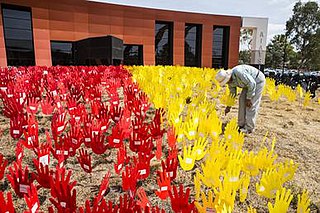
The Australian Institute of Aboriginal and Torres Strait Islander Studies (AIATSIS), established as the Australian Institute of Aboriginal Studies (AIAS) in 1964, is an independent Australian Government statutory authority. It is a collecting, publishing, and research institute and is considered to be Australia's premier resource for information about the cultures and societies of Aboriginal and Torres Strait Islander peoples.

Marn Grook, marn-grook or marngrook is the popular collective name for traditional Indigenous Australian football games played at gatherings and celebrations by sometimes more than 100 players. From the Woiwurung language of the Kulin people, it means "ball" and "game".
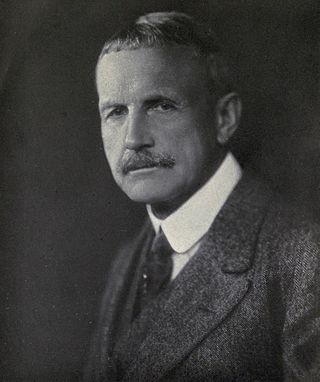
Carl Sofus Lumholtz was a Norwegian explorer and ethnographer, best known for his meticulous field research and ethnographic publications on indigenous cultures of Australia and Mexico.
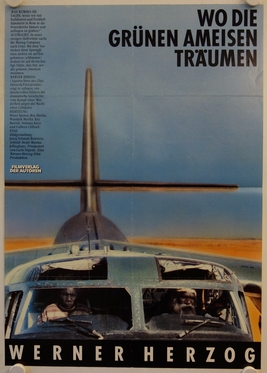
Where the Green Ants Dream is a 1984 English-language West German film directed and co-written by Werner Herzog, made in Australia. Based on a true story about Indigenous land rights in Australia, but slated as a mixture of fact and fiction, it only got a limited release in Australia, where it was not well received by critics; the film fared a bit better in Europe and North America.
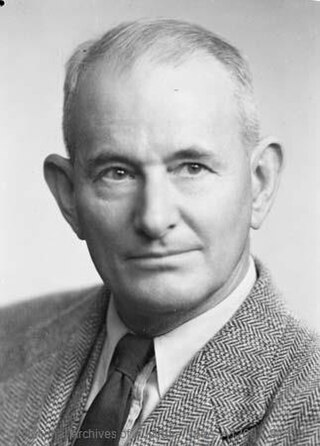
Charles Pearcy Mountford OBE was an Australian anthropologist and photographer. He is known for his pioneering work on Indigenous Australians and his depictions and descriptions of their art. He also led the American-Australian Scientific Expedition to Arnhem Land.
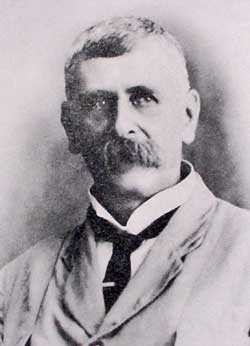
Walter Edmund Roth was a British colonial administrator, anthropologist and medical practitioner, who worked in Queensland, Australia and British Guiana between 1898 and 1928.
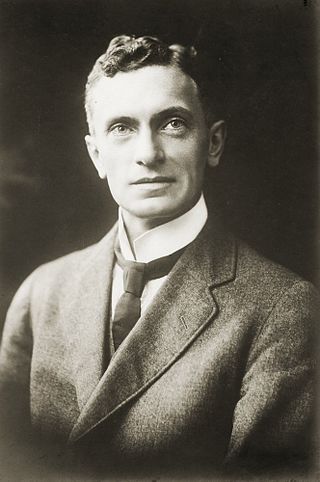
Herbert Basedow was an Australian anthropologist, geologist, politician, explorer and medical practitioner.
The history of the Aboriginal inhabitants of Western Australia has been dated as existing for 50-70 thousand years before European contact. This article only deals with documented history from non indigenous sources since European settlement in Perth.

Half-Caste Act was the common name given to Acts of Parliament passed in Victoria and Western Australia in 1886. They became the model for legislation to control Aboriginal people throughout Australia - Queensland's Aboriginals Protection and Restriction of the Sale of Opium Act 1897, NSW/ACT's Aboriginal Protection Act 1909, the Northern Territory Aboriginals Act 1910, South Australia's Aborigines Act 1911, and Tasmania's Cape Barren Island Reserve Act 1912.
The American-Australian Scientific Expedition to Arnhem Land remains one of the most significant, most ambitious and least understood expeditions. Commenced in February 1948, it was one of the largest scientific expeditions to have taken place in Australia and was conducted by a team of Australian and American researchers and support staff.

Bedevil, styled BeDevil, is a 1993 Australian horror film directed by Tracey Moffatt, the first feature directed by an Australian Aboriginal woman.
Tracey Moffatt is an Indigenous Australian artist who primarily uses photography and video.

The Barababaraba people are an indigenous Australian people whose territory covered parts of southern New South Wales and northern Victoria. They had close connections with the Wemba Wemba.
Joseph Benjamin Birdsell of Harvard University and UCLA was an anthropologist who studied Aboriginal Australians.
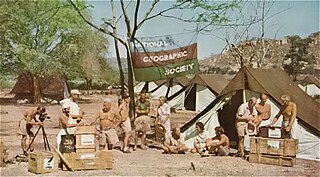
Frederick David McCarthy was an Australian anthropologist and archaeologist. He worked at the Australian Museum in Sydney and was Foundation Principal of the Australian Institute of Aboriginal Studies, with interests covering Australian archaeology, museology and Aboriginal rock art.

The Uutaalnganu people, also known as Night Island Kawadji, are an Aboriginal Australian group of Cape York Peninsula in northern Queensland. The name is also used collectively for several peoples in this area, such as the Pontunj / Jangkonj (Yanganyu), whose language is unconfirmed.
The Kuyani people, also written Guyani and other variants, and also known as the Nganitjidi, are an Aboriginal Australian people of the state of South Australia who speak the Kuyani language. Their traditional lands are to the west of the Flinders Ranges.
The Julaolinja were an indigenous Australian people of the state of Queensland.

Dark Emu: Black Seeds: Agriculture or Accident? is a 2014 non-fiction book by Bruce Pascoe. It re-examines colonial accounts of Aboriginal people in Australia, and cites evidence of pre-colonial agriculture, engineering and building construction by Aboriginal and Torres Strait Islander peoples. A second edition, published under the title Dark Emu: Aboriginal Australia and the Birth of Agriculture was published in mid-2018, and a version of the book for younger readers, entitled Young Dark Emu: A Truer History, was published in 2019.
This page is based on this
Wikipedia article Text is available under the
CC BY-SA 4.0 license; additional terms may apply.
Images, videos and audio are available under their respective licenses.













